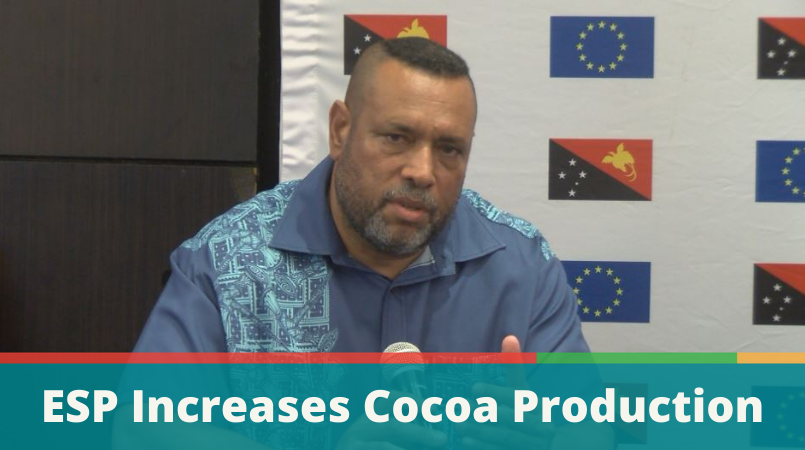
East Sepik Province Governor, Allan Bird this week highlighted the improved cocoa production in the province at a Trade Investment Conference.
Speaking at the ‘Second European Union – Papua New Guinea Business, Trade and Investment Conference’ on Monday 11 October, stressed on what his province was doing on cocoa production project.
Governor Bird was tasked to highlight projects that are aimed at promoting trade in the non-resource sector in the country.
He took the opportunity to share East Sepik’s cocoa production journey since the beginning of his leadership term.
Bird said: “One of the things that we’ve been trying to do in East Sepik and the greater Sepik region, particularly, East and West, recognizing the latent ability of the area itself.”
He said the Greater East and west Greater plains have a population of 800,000. The task for the leaders of the province is to figure out how best to generate wealth from the province’s natural resources of land and water.
Governor Bird said the provincial government started rolling out cocoa production programs in 2017.
“We started some work beginning about 2017. We were focused on cocoa. I was very interested, being a leader in the area, to look at how we can increase household incomes.”
He said they needed to figure out how to combine latent energy in small holder producers, how to aggregate production, marketing the product, sort quality issues, deal with financial access, training and upscaling, ensuring better production, and growing better yields.
Governor Bird said East Sepik 138,000 cocoa farmers. All producing around 80 kilos of cocoa per hectare of land. He said the level of inefficiency was high and needed to improve the efficiency of produce.
He pointed out that 2017, East Sepik produced about 9600 tonnes of cocoa that would have been worth about K70 or K80 million.
“Last year, we managed to double our production. We up around 20, 000 tonnes now. It didn’t take a lot of investment and they managed to double the amount of disposal income within the area.
“We are working closely with our European partners in the STREIT program which I’m hoping will raise the production even further.”
Governor Bird said he has a lot of faith in his people and their ability to work and that they can hit maybe 100,000 tonnes. Which he said is possible, given the number of funds and land allocated to them.
“It is possible and we can do that without chopping down new forest or anything like that. Just improving the production capacity of the current plans,” he said.
Governor Bird said, in order to develop the non-resource sector, apart from the exploitation of natural resources, efforts would have to be focused on assessing the ability of rural producers and small holder producers to empower and bring them into the global market.
Bird added: “We are fortunate that we’ve got the European Union on board and their investment program has started this year. I’m hoping that we will see some early results perhaps in the next two years as all of these productions starts to come on stream.”
